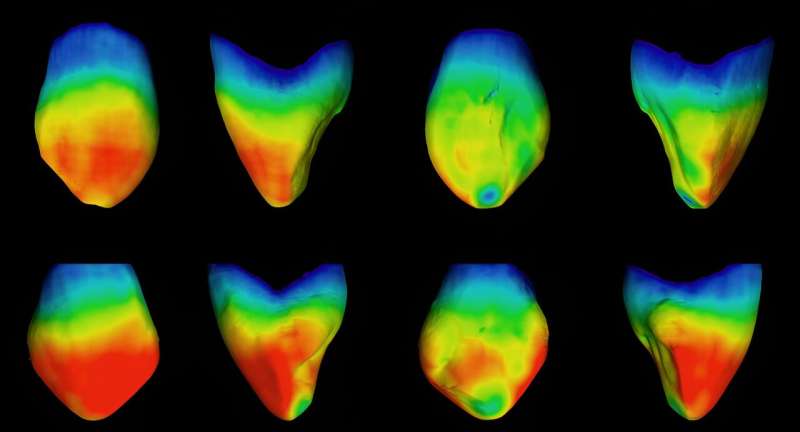This article has been reviewed according to Science X's editorial process and policies. Editors have highlighted the following attributes while ensuring the content's credibility:
fact-checked
peer-reviewed publication
proofread
Study analyzes differences in canine teeth between European and African populations

The Dental Anthropology Group at the Centro Nacional de Investigación sobre la Evolución Humana (CENIEH) has published a study in the journal Anthropological Science, in collaboration with the University of Bordeaux (France) and the University of Pretoria (South Africa), which analyzes the differences between the canines of European and African individuals.
Using the computerized axial micro-tomography (micro-CT) facility at the CENIEH Microscopy and Micro-Computed Tomography Laboratory, the authors were able to analyze the internal structures in the dentition of both populations, allowing them to observe differences in the absolute and relative dimensions of the enamel and dentin in the canines, and it was seen in particular that the African populations have more enamel on their teeth.
The thickness of the enamel has been used in paleoanthropological studies to infer species and the relationships between different fossil populations. In fact, this dental trait is usually employed to distinguish the dentition of Neanderthals (with thin enamel) from that of modern humans (whose enamel is thicker). Nevertheless, little was known up to now of how this trait varies among modern populations.
"Our research highlights the importance of selecting comparative samples properly in future paleoanthropological studies, and tells us specifically that these should be sex-balanced and geographically mixed," says Silvia Blasco Moreno, lead author of this study and a student on the Inter-University Master's in Physical Anthropology (UAM, UCM, UAH), who conducted this work under the joint supervision of the CENIEH researcher Cecilia García Campos and Dr. Clément Zanolli, of the University of Bordeaux.
More information: Silvia Blasco-Moreno et al, Inter- and intrapopulation variability of dental tissue proportions of European and African modern human populations' permanent canines, Anthropological Science (2023). DOI: 10.1537/ase.2307141
Journal information: Anthropological Science
Provided by CENIEH





















